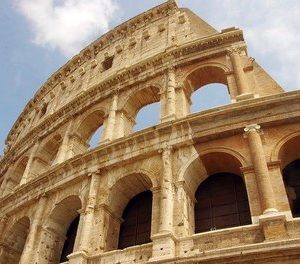One of the most popular tourist sites in Italy, the Colosseum, will be made new again and will be ready in 2023.
The symbolic monument of Italy known as the Colosseum will get a new wooden floor with a super technological and green soul along with a system of panels with a carbon fiber core that moves and rotates like a sort of super sophisticated brie soleil that will guarantee both the view of the basement and its ventilation. This is how the new Colosseum arena will be in 2023, the most ambitious and contested challenge of the Italy Minister of Cultural Heritage, Dario Franceschini.
It will be “an extremely light and completely reversible structure” assured the designers of Milan Ingegneria, the Venetian company that won, together with other specialists, the tender launched by Invitalia for the construction of the project, financed since 2015 with 18.5 million euros.
“An ambitious project that will help the conservation and protection of archaeological structures by recovering the original image of the Colosseum and also restoring its nature as a complex scenic machine,” defined the minister who has taken this idea to heart since 2014 by relaunching the input of archaeologist Daniele Manacorda and then carrying it forward despite the criticisms and controversies that have come from many insiders.
And that today returns to the possibility of exploiting the rediscovered arena also for “high-profile” events and cultural or entertainment initiatives of international caliber. “I know that there will be controversy,” the minister admits, but “the Colosseum is our symbolic monument; it is right that we discuss it. But it is a great challenge for Italy.”
On July 29, the amphitheater – still to be modernized – will symbolically host the first G20 of the ministers of culture.
It will take more months to finalize what architects and engineers call “the executive” and at the same time another call for tenders will have to be launched to identify the company that will build it. But the times at this point are quite limited as the new arena of the Colosseum anticipates as the Director of the Archaeological Park of Pompeii, Alfonsina Russo, said should be built by 2023.
The engineering firm at the head of the winning group boasts a very rich portfolio of projects all over the world and decades of collaborations with great architects starting from Renzo Piano and also architects whose names are linked to the conservative restoration of the Palladian Basilica in Vicenza.
The project, which was drawn up together with architect Fabio Fumagalli of Labics and others was chosen by a commission drawn by Invitalia. At the basis there is the idea of combining the reasons for protection with the recovery of the image origin of the monument and that of its functioning as a complex scenic machine.
The platform, explained architect Fabio Fumagalli, was placed at the level it had been at the time of the Flavians and “takes both form and functions from the original plan.”
The beams “are placed directly on the wall structures without mechanical anchors” and this is precisely to make the structure as less invasive as possible and completely reversible. “If in ten or a hundred years there is the need to remove it, it will be possible to restore the state of today’s event,” pointed out Massimiliano Milan.
The new decking will consist of movable panels made of protruded carbon and covered with Accoya wood, a material “obtained through an acetylation process of the wood fibers” to increase its resistance and also its durability. High technology is in play, therefore, and also sustainability, because precious essences will not have to be demolished and, among other things, the recycling of rainwater has been envisaged.
A sophisticated mechanism of “rotation and translation” of the panels of which the platform is composed will serve to guarantee both the view of the basement and its ventilation and lighting, as well as allowing the original scenic system to be seen. Distributed along the perimeter of the monument there will then be 24 mechanical ventilation units that will control the humidity and temperature of the underground rooms.
“In just 30 minutes, it will be possible to guarantee the complete exchange of the entire volume of air,” the designers still assured. Hence also the step forward underlined by the minister for the protection of the Italian monument that has been increasingly visited stated, “The new level of the arena – explain the designers – will protect the underlying environments from atmospheric agents; the water discharge will be significantly reduced thanks to a system of rainwater collection which will then be reused in the Colosseum public conveniences.”
Source: eTN / Image: Pixabay






